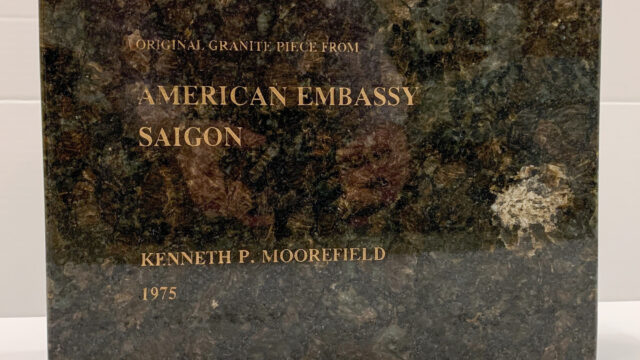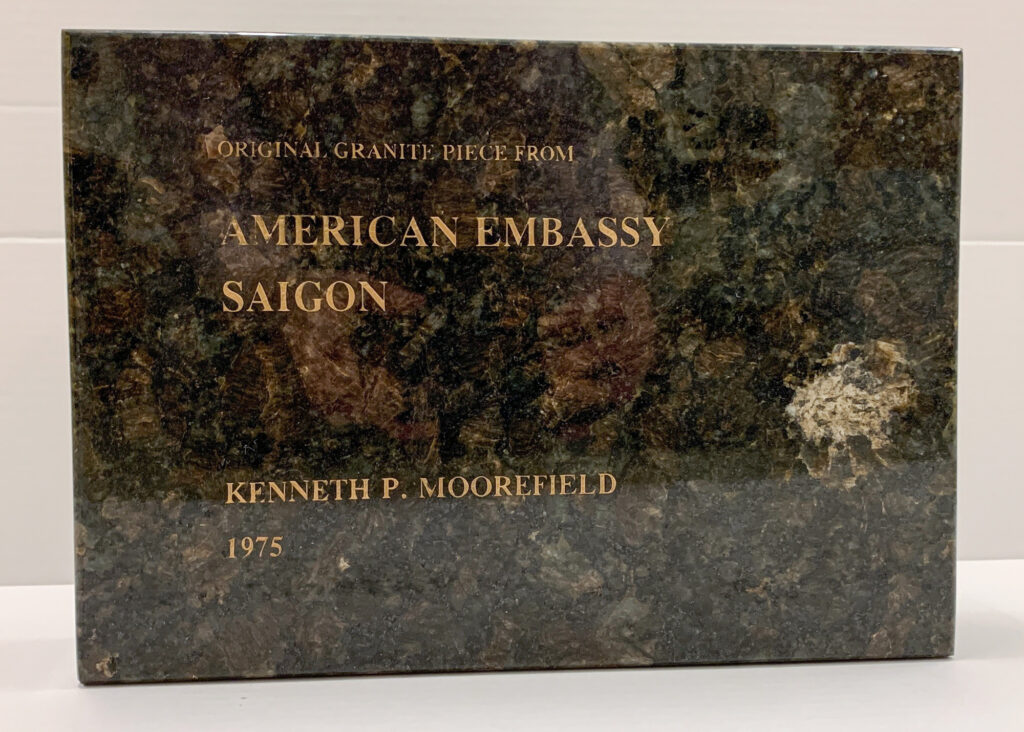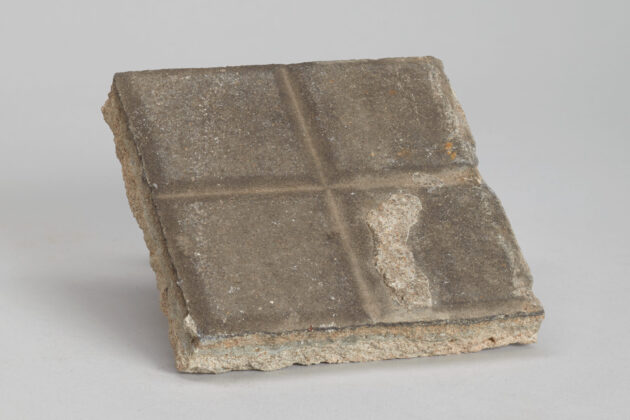
A Piece of the 1968 Attack on U.S. Embassy, Saigon
This fragment of granite from the exterior of the U.S. embassy building in Saigon belongs to Kenneth P. Moorefield, who served as a military advisor during the Tet Offensive in 1968. He later returned to South Vietnam in 1973 as a diplomat to serve as a special assistant to Ambassador Graham Martin. The granite bears a mark from a rifle round, evidence from the attack on the embassy on January 31, 1968.
Moorefield, who went on to serve as a U.S. ambassador during his career as a diplomat, has generously loaned this fragment to the museum for use in programs and exhibits.
Attack on the U.S. Embassy, Saigon
During the Cold War, tensions between the United States and the Soviet Union and their allies erupted into proxy wars around the world. In Vietnam, diplomats served alongside the U.S. military in efforts to stop the spread of communism.
Early in the morning of Jan. 31, 1968, as the Vietnamese people celebrated Tet, the Lunar New Year, Communist Viet Cong forces launched coordinated surprise attacks across South Vietnam. The U.S. embassy in Saigon was a target that day. Viet Cong commandos seized control of part of the compound and held it for about six hours before they were killed or captured. The attack on the embassy shocked the American public, who believed that the United States was winning the war.
Thousands more Americans and Vietnamese would die before the last U.S. combat troops left Vietnam in 1973. In April 1975, the U.S. embassy in Saigon was evacuated when the Viet Cong captured the city.



Fragment of Granite Wall, U.S. Embassy, Saigon
On January 31, 1968, during the Tet Offensive, the Viet Cong attacked the U.S. Embassy in Saigon, damaging this piece of granite from the ground floor of the embassy.
It is a tangible reminder of not only the sacrifice of the servicemen killed during the attack but the bravery and composure the embassy staff displayed. It also reminds us of the dangers faced by the Marine Security Guards who protect our global diplomatic missions today.
This piece is on loan courtesy of Ambassador Kenneth P. Moorefield, who was serving as a military advisor during the Offensive. In 1973, he returned to Vietnam as a special assistant to the U.S. Ambassador to South Vietnam, Graham Martin. He served until the evacuation in April 1975.

Moorefield went on to a long career with the U.S. Departments of State and Commerce, eventually serving as the U.S. Ambassador to the Republic of Gabon and the Democratic Republic of São Tomé and Príncipe.
In the late 1990s, Moorefield returned to Vietnam as the Director of the U.S. Foreign Commercial Service in Hanoi. Before his departure in 1998, a friend who worked as a contractor on the demolition of the old U.S. embassy in Saigon (now known as Ho Chi Minh City) gifted him this piece of granite from the site.



